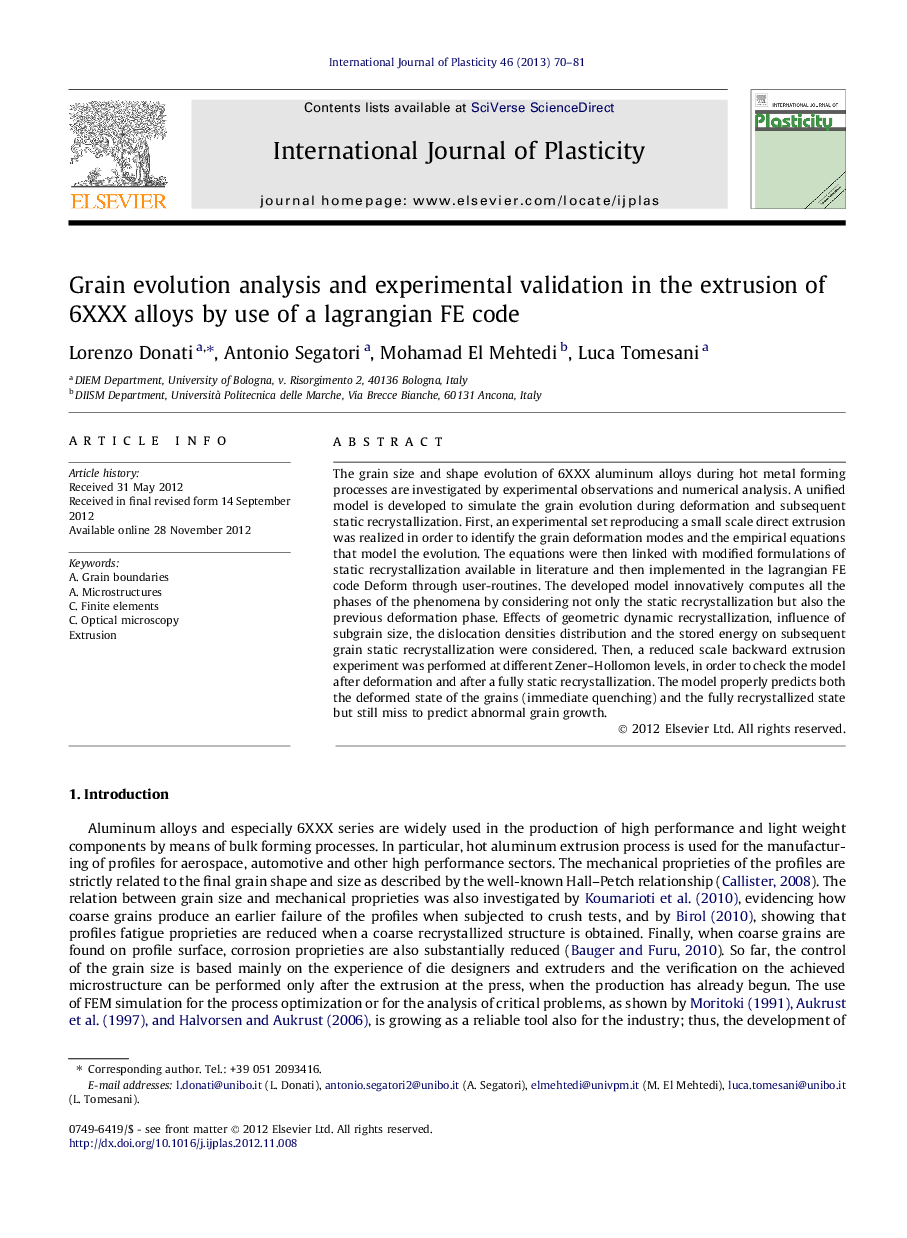| Article ID | Journal | Published Year | Pages | File Type |
|---|---|---|---|---|
| 786250 | International Journal of Plasticity | 2013 | 12 Pages |
The grain size and shape evolution of 6XXX aluminum alloys during hot metal forming processes are investigated by experimental observations and numerical analysis. A unified model is developed to simulate the grain evolution during deformation and subsequent static recrystallization. First, an experimental set reproducing a small scale direct extrusion was realized in order to identify the grain deformation modes and the empirical equations that model the evolution. The equations were then linked with modified formulations of static recrystallization available in literature and then implemented in the lagrangian FE code Deform through user-routines. The developed model innovatively computes all the phases of the phenomena by considering not only the static recrystallization but also the previous deformation phase. Effects of geometric dynamic recrystallization, influence of subgrain size, the dislocation densities distribution and the stored energy on subsequent grain static recrystallization were considered. Then, a reduced scale backward extrusion experiment was performed at different Zener–Hollomon levels, in order to check the model after deformation and after a fully static recrystallization. The model properly predicts both the deformed state of the grains (immediate quenching) and the fully recrystallized state but still miss to predict abnormal grain growth.
► Grain shape evolution of AA6060 alloy is investigated in extrusion conditions. ► A model for grain deformation and subgrain formation is proposed. ► A model predicting the grain evolution during extrusion was validated. ► Static recrystallization can be computed, abnormal grain growth not yet. ► High deforming temperatures and strain rates promote grain coarsening.
